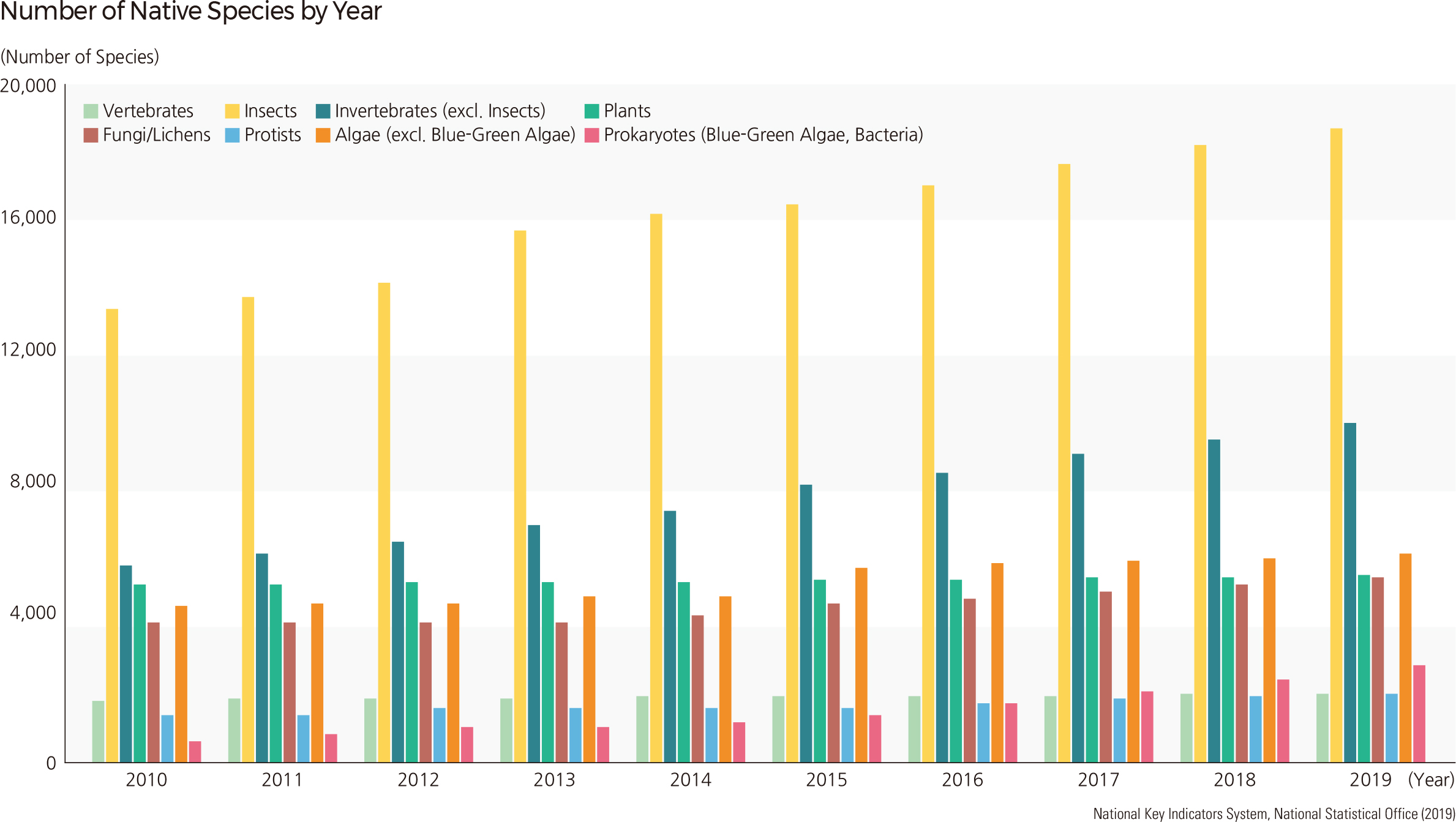English II 2020
As of 2020, a total of 52,628 plant and animal species native to Korea have been catalogued. Among the native species, insects represent the largest proportion at 35.4%, with 18,638 species, followed by invertebrates (9,900 species), plants (5,517 species), and birds (5,427 species). A survey conducted in 2000 recorded a total of 28,462 species, which increased to 29,916 in 2005 after a comprehensive survey and data compilation process. The number of recorded species has increased since the full-fledged biological survey. In 2008, 33,253 species were recorded, with increases in subsequent years as follows: 39,150 in 2012, 50,827 in 2018, and 52,628 in 2019. The number of species native to Korea is expected to continue increasing as more surveys are conducted.
Korea is a temperate region; its flora is characterized by rich diversity and a high ratio of endemic plants, including endemic vascular plant genera, such as Pentactina, Abeliophyllum, Hanabusaya, Mankyua, and Megaleranthis. There are 4,576 vascular plant species documented in Korea, among which 335 are pteridophyta, 55 are gymnosperms, and 4,186 are angiosperms. Out of 4,186 angiosperms, 3,017 are dicotyledoneae, and 1,169 are monocotyledoneae.
The rich floristic diversity and high endemism of Korea may be due to several factors. First, the Peninsula, which extends southward from Northeast Asia to the Japanese Islands (42˚ 2' to 33˚ 4' north latitude), accommodates a diverse distribution of plant and animal species. Second, the mountains and hills, which occupy nearly 65 percent of Korea's territory, contribute to diversity. A major mountain range that runs from the north to the south connects to other mountain chains on the Peninsula. The presence of about 4,000 islands provides an isolated, diverse geographical environment that accommodates diverse flora. Third, Korea has climatic variability. The mean annual temperature varies from 16°C in Jejudo of South Korea to 5°C in the Gaemagowon (Gaema Highland) of North Korea. The Peninsula also experiences a wide range of temperature variations, e.g., a winter temperature low of -45°C at Baekdusan, North Korea and a summer temperature high of 40°C in Daegu, South Korea. Mean annual precipitation also varies greatly, from 1,700 mm in Jejudo and along the southern coastal region of South Korea to 950 mm in northern inland regions of North Korea. Distinct climatic zones from warm temperate to boreal also provide various conditions for diverse plants to grow. Fourth, there is relatively little volcanic and seismic activity, and no extensive glacial activity. These conditions, combined with other conditions, such as complex bedrock and soil systems, secured the survival of Tertiary flora. Finally, the Korean Peninsula, which has served as a migration route and refuge during both glacial and interglacial periods, has guaranteed the survival of both northern and southern floras. |

